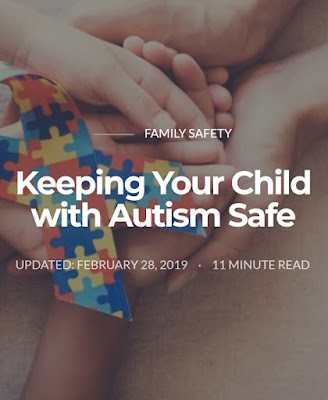"TikTok also received the biggest fine in US history for gathering data on kids and selling it," revealed Susan McLean, former Victorian police cyber safety specialist.
By Shilpa Das Gupta
If your child is using Tiktok, one of the most popular video-sharing apps, they might not be safe as many have regarded it as a pedophile magnet. The Chinese application, which allows users to create and share short videos, came to limelight in early 2018 after achieving approximately 45.8 million users. Due to its video-only interface, unlike Facebook and Twitter, it gained popularity amongst children, especially those under the age of 16. The app, which has surpassed the popularity of Snapchat, requires a person to only be 13 years of age or above to sign up for an account. This exposes young and impressible kids to predators who can view their pictures and contact them unless the account is private.
Addressing the growing fears surrounding its privacy, Susan McLean, former Victorian police cyber safety specialist, said, "TikTok is not a safe app and there are many concerns, not the least bullying and grooming by predators." Speaking to Daily Mail Australia, she further warned, "Any app that allows communication can be used by predators." A recent investigation conducted by BBC News found that TikTok failed to remove the accounts of people sending sexual messages to teenagers and children.
Through this three month probe, the outlet was able to gather hundreds of sexual comments posted on videos uploaded by teens and kids. Although the company was successful in deleting most of these unsavory comments, they failed to suspend the accounts of users who posted them in the first place, thus going directly against TikTok's own rules of sexual content directed at children. "TikTok does not have the same safety sessions as some of the more well-known apps and routinely do not remove accounts that have been flagged as potentially a predator," explained McLean.
"Paedophiles like to watch kids sing and dance so they can take the videos and share them," she continued. "The data gathering is a huge concern and if the government is worried then it is not a place for kids." While TikTok's website explains how parents have the option to set their kid's profile to private, it also admits that "even with a private account, profile information – including profile photo, username, and bio – will be visible to all users." It also urged parents to 'counsel' their children not to disclose sensitive information like age, address, or phone number on the website.
The application is also feared to increase the scope of bullying through its platform and Kids Helpline revealed that they had received reports from its concerned counselors about the same. In one such occurrence, a child came across a video posted by a girl at school, where she was heard saying that she should "die in a hole." Additionally, there are many concerns about the privacy and data that are used by the company. "Both the US and Australian governments have told serving soldiers that they are not to use it because of security fears," revealed Ms. McLean. "TikTok also received the biggest fine in US history for gathering data on kids and selling it."
TikTok's in-app parental control feature is the combination of Screen Time Management and Restricted Mode, which is called Digital Wellbeing. This feature enables parents to set up a password when they turn on the digital well-being feature on their kid's phone and allows them to set a limit to the time their kid spends on the app per day watching only filtered content.
#TikTokSafetyAcademy
Defending its privacy policy, a spokesperson for TikTok said, "TikTok is an app for users age 13 and over, and we’ve given the app a 12 App Store rating so parents can simply block it from their child’s phone using device-based controls. In our Safety Centre we offer a library of educational resources for teens and their families, including safety educational videos and a safety blog series. As one of many apps with teenage users, we encourage parents to monitor their teenager’s account, review and adjust their privacy settings, help them report any inappropriate behavior, and have an open dialogue with their teenagers about how to be responsible and safe in all online activity."
By Shilpa Das Gupta
If your child is using Tiktok, one of the most popular video-sharing apps, they might not be safe as many have regarded it as a pedophile magnet. The Chinese application, which allows users to create and share short videos, came to limelight in early 2018 after achieving approximately 45.8 million users. Due to its video-only interface, unlike Facebook and Twitter, it gained popularity amongst children, especially those under the age of 16. The app, which has surpassed the popularity of Snapchat, requires a person to only be 13 years of age or above to sign up for an account. This exposes young and impressible kids to predators who can view their pictures and contact them unless the account is private.
Addressing the growing fears surrounding its privacy, Susan McLean, former Victorian police cyber safety specialist, said, "TikTok is not a safe app and there are many concerns, not the least bullying and grooming by predators." Speaking to Daily Mail Australia, she further warned, "Any app that allows communication can be used by predators." A recent investigation conducted by BBC News found that TikTok failed to remove the accounts of people sending sexual messages to teenagers and children.
Through this three month probe, the outlet was able to gather hundreds of sexual comments posted on videos uploaded by teens and kids. Although the company was successful in deleting most of these unsavory comments, they failed to suspend the accounts of users who posted them in the first place, thus going directly against TikTok's own rules of sexual content directed at children. "TikTok does not have the same safety sessions as some of the more well-known apps and routinely do not remove accounts that have been flagged as potentially a predator," explained McLean.
"Paedophiles like to watch kids sing and dance so they can take the videos and share them," she continued. "The data gathering is a huge concern and if the government is worried then it is not a place for kids." While TikTok's website explains how parents have the option to set their kid's profile to private, it also admits that "even with a private account, profile information – including profile photo, username, and bio – will be visible to all users." It also urged parents to 'counsel' their children not to disclose sensitive information like age, address, or phone number on the website.
The application is also feared to increase the scope of bullying through its platform and Kids Helpline revealed that they had received reports from its concerned counselors about the same. In one such occurrence, a child came across a video posted by a girl at school, where she was heard saying that she should "die in a hole." Additionally, there are many concerns about the privacy and data that are used by the company. "Both the US and Australian governments have told serving soldiers that they are not to use it because of security fears," revealed Ms. McLean. "TikTok also received the biggest fine in US history for gathering data on kids and selling it."
TikTok's in-app parental control feature is the combination of Screen Time Management and Restricted Mode, which is called Digital Wellbeing. This feature enables parents to set up a password when they turn on the digital well-being feature on their kid's phone and allows them to set a limit to the time their kid spends on the app per day watching only filtered content.
#TikTokSafetyAcademy
Defending its privacy policy, a spokesperson for TikTok said, "TikTok is an app for users age 13 and over, and we’ve given the app a 12 App Store rating so parents can simply block it from their child’s phone using device-based controls. In our Safety Centre we offer a library of educational resources for teens and their families, including safety educational videos and a safety blog series. As one of many apps with teenage users, we encourage parents to monitor their teenager’s account, review and adjust their privacy settings, help them report any inappropriate behavior, and have an open dialogue with their teenagers about how to be responsible and safe in all online activity."































